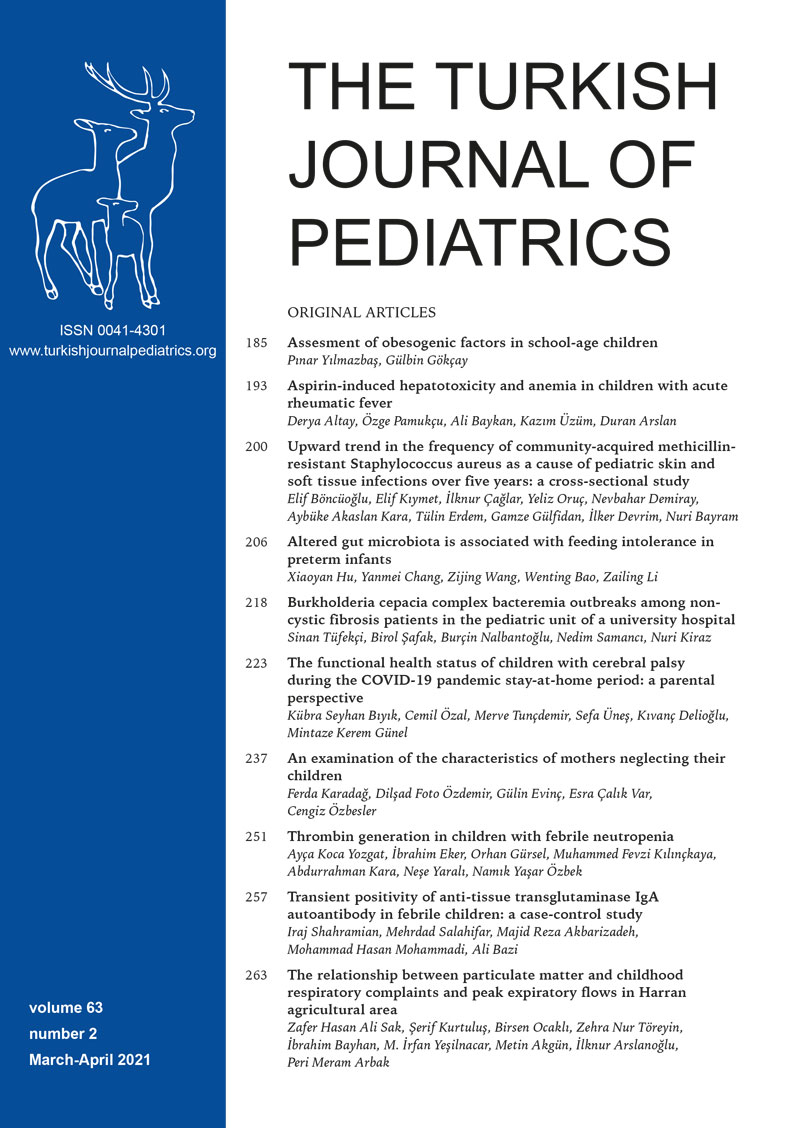Abstract
Background. Fever is a physiological response activated by integrative interactions between the neuronal and immune systems. The association of fever with the development of autoantibodies against various self-antigens is controversial. We here evaluated if fever was associated with increased levels of anti-tissue transglutaminase (tTG) IgA autoreactive antibodies in children.
Methods. This was a case-control study performed the Amir-Al-Momenin Hospital of Zabol City from January to December 2018. Febrile children (N=135) and apparently healthy counterparts (N=135) were included. Total IgA and anti-tTG IgA were measured by ELISA.
Results. From 270 children evaluated, 144 (53.6%) and 126 (46.4%) were males and females, respectively. The mean age was 4.7 ± 2.6 years. The mean total IgA titer was 208 ± 100 mg/dl, and the mean anti-tTG IgA titer was 15.9 ± 68 mg/dl. There was a significant difference in the mean titer of anti-tTG IgA between apparently healthy controls (1.97 ± 1.12 mg/dl) and febrile children (30.2 ± 94.9 mg/dl, p=0.002). Positivity for anti-tTG IgA was observed in 16 (11.8%) out of 135 febrile children while no subject in the control group had positive results. One out of the 16 positive cases showed persistent elevated levels after fever disappearance. On biopsy examination, this child was confirmed to have celiac disease.
Conclusions. We showed that fever can trigger the production of anti-tTG IgA autoantibody in children. It is recommended for pediatricians to be vigilant in interpreting anti-tTG IgA results during fever episodes and repeat positive cases after the cease of fever. It is also recommended to reassess anti-tTG IgA seropositivity in other clinical settings in future studies.
Keywords: autoantibody, celiac disease, fever, immune system, tissue transglutaminase
Copyright and license
Copyright © 2021 The Author(s). This is an open access article distributed under the Creative Commons Attribution License (CC BY), which permits unrestricted use, distribution, and reproduction in any medium or format, provided the original work is properly cited.














